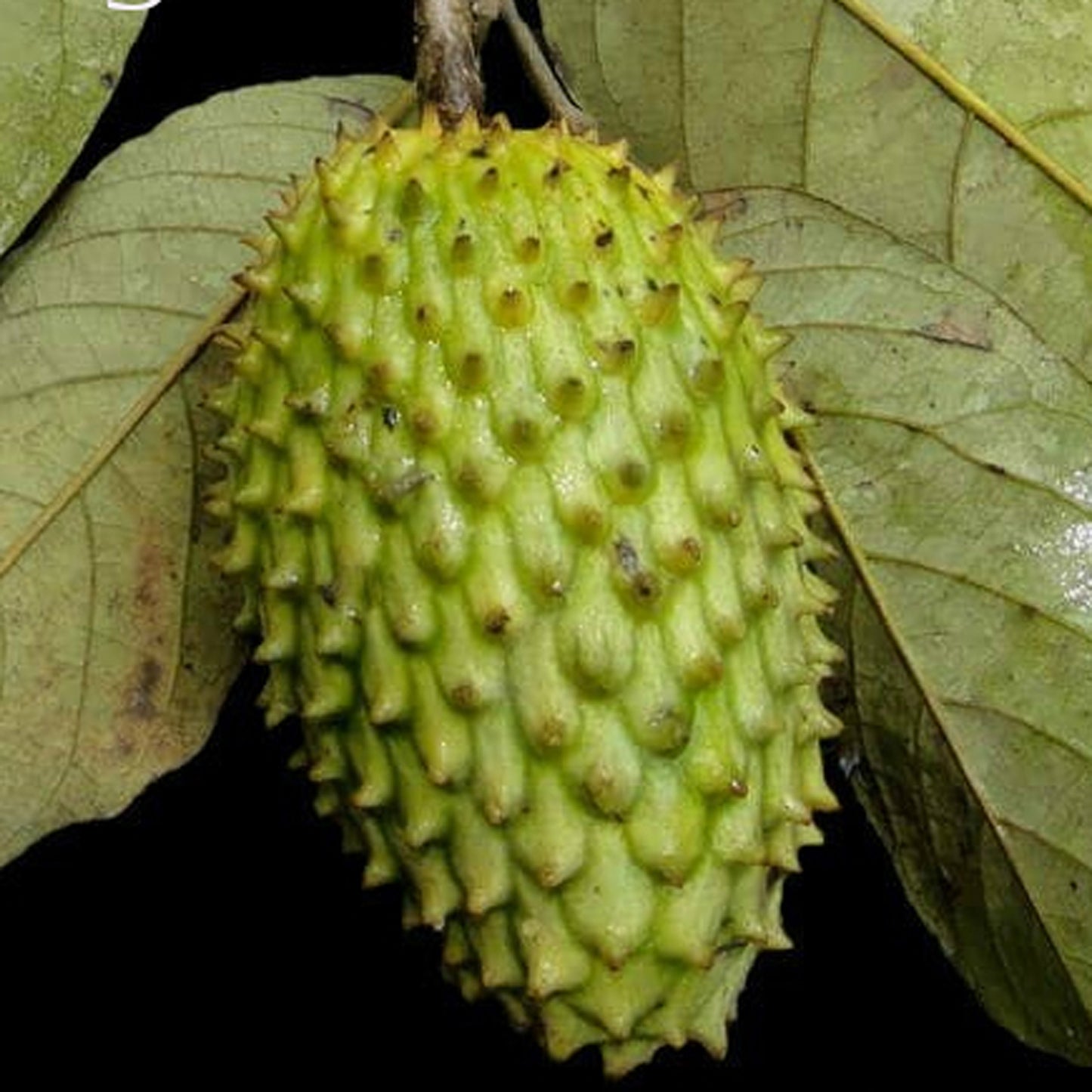Love it? Add to your wishlist
Your favorites, all in one place. Shop quickly and easily with the wishlist feature!
[message]
[title]
[message]


Veliyath Gardens
Couldn't load pickup availability
Annonilla – The Amazon’s Buttery Delight with Hidden Medicinal Wisdom
Botanical Name: Annona hypoglauca
Common Name: Annonilla
Rooted in the lush, floodplain rainforests of the Amazon, Annona hypoglauca, affectionately known as Annonilla, is a lesser-known yet highly cherished fruit of the Annonaceae family. With its creamy, subtly sweet pulp and compact size, Annonilla stands apart from the mainstream annona fruits, offering a uniquely mild taste and a dense nutritional profile. Found in Brazil, Ecuador, Peru, and Bolivia, it thrives in várzea and igapó forest systems—those that flood seasonally, imbuing the plant with resilience and hardiness.
Origin: Indigenous to the tropical lowlands of the Amazon Basin, especially in the moist, river-fed zones of Brazil, Peru, and Ecuador.
Habitat: Naturally occurring in várzea (whitewater) and igapó (blackwater) flooded forests, which are known for their seasonal inundations and biodiversity.
Plant Nature: This species is typically a small to medium-sized tree, growing well in moist, shaded, and organically rich soils.
Adaptability: Remarkably adaptive to container gardening and small garden plots due to its compact height and graceful structure.
Appearance: Slightly slimmer and smaller than common custard apples or cherimoyas, with a soft, thin skin that ripens to a pale green or yellowish hue.
Pulp Texture: Velvety, buttery, and creamy—offering a luxuriously smooth bite.
Taste Profile: Mildly sweet, resembling a lighter version of Annona cherimola (cherimoya), but with a subtle hint of nutty undertones and soft tropical notes.
Aroma: Gentle, clean, and inviting—without the overpowering perfume of other annonas.
Traditionally eaten fresh off the tree, either by scooping with a spoon or slicing for salads.
Pairs beautifully with soft cheeses, creamy desserts, and tropical fruit platters.
Blended into smoothies, milkshakes, or nutritious bowls for a wholesome breakfast.
Chilled pulp makes a refreshing base for homemade sorbets or frozen yoghurts.
Due to its mild flavor, it’s ideal for those who prefer subtle sweetness and low-acidity fruits.
Though relatively under-studied compared to other Annonas, Annonilla shares several healthful properties believed to be passed from its botanical relatives:
Rich in antioxidants
Supports cellular regeneration and combats oxidative stress.
Mood-boosting compounds
Anecdotally used in traditional practices to uplift mental well-being.
Digestive regulation
High fiber content helps maintain a healthy digestive system.
Vision Support
Contains carotenoids that may benefit eye health and clarity.
Anti-inflammatory and anticancer properties
As with many annonas, bioactive compounds in its leaves and fruit may contribute to holistic wellness.
Blood pressure control
Believed to help regulate blood pressure due to its mineral content and calming qualities.
In Amazonian communities, Annonilla has been used in folk medicine for its potential in addressing fevers, parasitic infections, and as a digestive aid.
The tree’s leaves are sometimes brewed into calming infusions, similar to those of related species like Annona muricata.
The fruit is occasionally gifted during cultural festivals, celebrated as a rare native delicacy in remote riverine communities.
Fruit-bearing Time: Usually begins to fruit within 3 to 4 years of planting.
Maintenance: Moderate; thrives in humid, organically rich environments with partial shade to full sun.
Watering Needs: Consistent moisture is vital, especially during dry months. Mulching around the base helps retain soil humidity.
Soil Preference: Prefers slightly acidic to neutral loamy soil with good drainage.
Pruning and Care: Prune lightly to maintain form and promote airflow. The tree responds well to regular organic feeding.
Container Growth: Performs well in large containers or raised beds, making it suitable for limited garden spaces.
Post-Harvest Use: Best consumed fresh or refrigerated immediately.
Storage Tips:
Store in a cool place and avoid bruising.
Scoop and freeze pulp for later use in smoothies or desserts.
Seed Saving: Seeds can be washed, sun-dried, and stored in breathable bags for planting during warm months.
Although not commercially widespread, Annonilla enjoys a revered status among ethnobotanists and rare fruit collectors.
Seen as a cultural and ecological symbol of the Amazon’s unique biodiversity.
Highly sought after in specialty fruit gardens, research collections, and among collectors of medicinal plants.
Its soft texture and unique flavor give it a place in culinary heritage recipes passed down in riverside Amazonian households.
Due to its exotic nature and specific growth needs, Annonilla is in high demand at Veliyath Gardens. Our carefully propagated plants, grown under optimal tropical conditions, are made available in limited numbers per season. The rarity of this species and the time-intensive nature of cultivation make it a must-grab for rare fruit lovers.
Brings a unique Amazonian flavor and feel into your home garden.
Perfect for those seeking low-acid, creamy-textured tropical fruits.
Its subtle flavor complements both simple and gourmet culinary uses.
A wonderful choice for collectors, wellness enthusiasts, and sustainable gardeners.
Adds both aesthetic and ecological value to exotic fruit gardens.
Conclusion
Annona hypoglauca, or Annonilla, is a delightful addition to the rare fruit family—subtle in flavor, rich in traditional value, and cherished for its nutritional richness. Whether you're seeking to expand your exotic fruit collection or nurture a plant rooted in Amazonian tradition, this tree brings quiet beauty and vibrant health to your garden.
At Veliyath Gardens, our limited-stock Annonilla plants are grown with care, respect for nature, and a passion for preserving botanical rarity. Don’t miss your chance to own this rare fruit plant—your garden deserves its buttery brilliance.
Fruit-bearing Time: Usually begins to fruit within 3 to 4 years of planting.
Maintenance: Moderate; thrives in humid, organically rich environments with partial shade to full sun.
Watering Needs: Consistent moisture is vital, especially during dry months. Mulching around the base helps retain soil humidity.
Rich in antioxidants
Supports cellular regeneration and combats oxidative stress.
Mood-boosting compounds
Anecdotally used in traditional practices to uplift mental well-being.
Digestive regulation
Brings a unique Amazonian flavor and feel into your home garden.
Perfect for those seeking low-acid, creamy-textured tropical fruits.
Its subtle flavor complements both simple and gourmet culinary uses.



